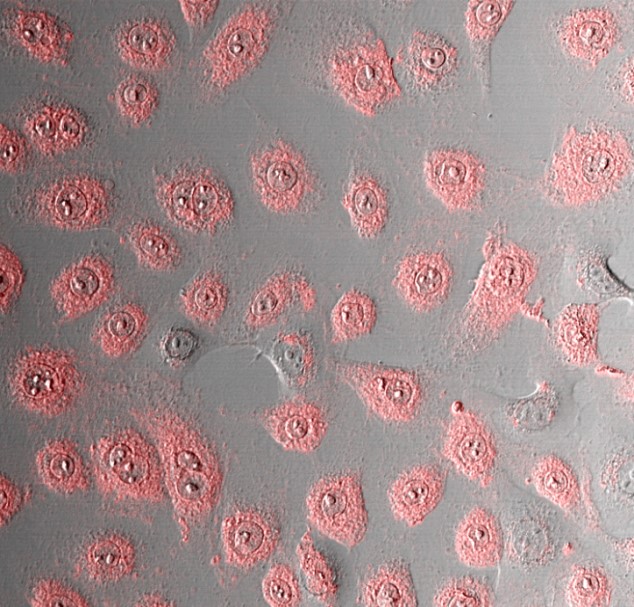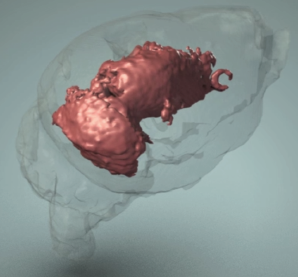Spherical Nucleic Acids (SNAs) as Gene Regulation Agents: Enabling Genetic Medicines

Confocal microscopy image indicating that SNAs enter cells (in fact, over 60 different cell types to date); the fluorescence comes from a dye-label on the SNA surface.
Spherical nucleic acids (SNAs), despite their high negative charge, are taken up by cells in high quantities as single entities (without the need for toxic transfection agents) and are highly effective as gene regulation agents in both siRNA and antisense pathways. This feature sets them apart from the analogous linear nucleic acids and presents a potential solution to a major roadblock to the widespread use of nucleic acid-based medicines. Class A scavenger proteins facilitate SNA endocytosis, and SNAs do not trigger an unwanted cellular immune response. Moreover, SNAs resist oligonucleotide degradation (degradation is another common issue with nucleic acid therapeutics based on linear structures). These properties make SNAs a very powerful therapeutic platform for many diseases with a genetic basis; skin diseases and disorders and brain cancer have been among the first targeted by SNA treatments. The first therapeutic versions of SNAs have entered human clinical trials in the US and Europe. Four drugs are in various stages of clinical trials and have demonstrated safety and therapeutic efficacy (e.g., NCT03086278, NCT03684785).

Three-dimensional reconstruction of magnetic resonance (MR) images of tumor-bearing mouse brains injected intracranially with Gd(III)-labeled SNAs; the SNAs show pervasive intratumoral dissemination. Right is taken from Science Trans. Med., 2013, 5, 209ra152.